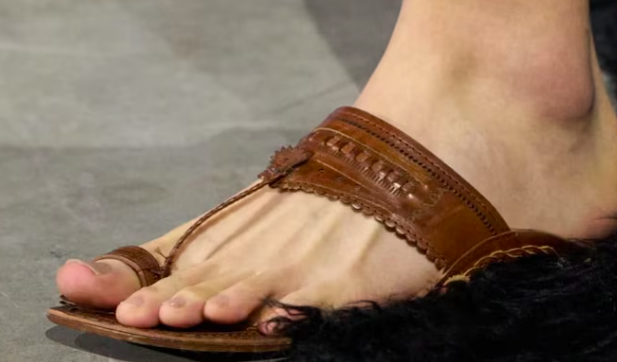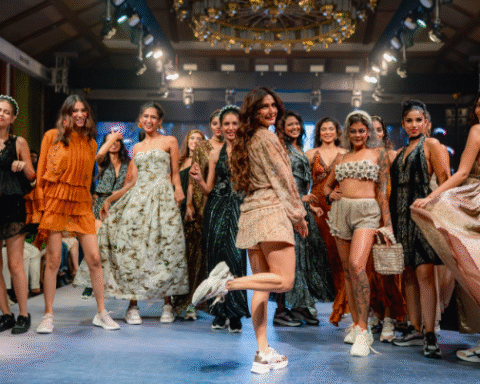Prada’s always had a way of keeping the fashion world on its toes, but this time, the buzz isn’t about silhouettes or fabrics—it’s about shoes. And not just any shoes. Earlier this year, they sent what looked like Kolhapuri chappals down the Milan runway. Simple, handcrafted-looking leather sandals that bore an unmistakable resemblance to the iconic Indian footwear that’s been a staple for centuries.

At first glance, it looked like a bold tribute. But soon enough, the questions started pouring in. Was this a celebration of Indian craftsmanship, or just another high-fashion brand casually borrowing from a rich cultural legacy—without giving credit where it’s due?
The conversation hadn’t even cooled down when Prada came back with another surprise: jutti-style heels. Yes, juttis. The pointed-toe, flat-soled traditional footwear from India, now reimagined with a sleek heel and labeled “antiqued leather pumps.” While the twist is undeniably stylish, the core design feels a little too familiar. And once again, there’s no mention of where the inspiration came from.
It begs the question, has Prada officially entered its “India era”?
It’s no secret that global fashion has often taken inspiration from Asian aesthetics. But there’s a fine line between admiration and appropriation. Indian crafts have always had a distinct voice—be it through textiles, embroidery, or footwear. They tell stories of heritage, skill, and artistry passed down through generations. So when a mega-brand like Prada showcases a look that’s nearly identical to something deeply rooted in Indian culture, people want to see acknowledgment. They want collaboration, not quiet imitation.
What if, instead of simply lifting silhouettes, Prada had actually worked with artisans from Kolhapur or Amritsar? Shared the story behind the craft, involved local communities, and gave them the recognition they deserve? That kind of cross-cultural fashion would not just be powerful—it would be revolutionary.
Of course, none of this is to say that India shouldn’t be a muse. Quite the opposite. Indian design has every right to take center stage in the luxury fashion world. But when brands like Prada start dipping into traditional closets, it’s time to start asking harder questions.
Is this the beginning of a deeper, more thoughtful global fusion—or just another trend moment where credit gets lost in translation?
Because if Kolhapuris were Prada’s first step, and juttis are next… who’s to say where the line is drawn?







